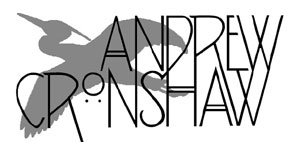
- Andrew Cronshaw website -
- Andrew Cronshaw MySpace -
- Cloud Valley Music website -
- Andrew Cronshaw website -
- Andrew Cronshaw MySpace -
- Back to Reviews Introduction page -
Written in
fRoots
issue 341/342, 2011
MOSCOW CHORUS OF HORN PLAYERS & FOLK ENSEMBLE ULITSA
Russia – The Tradition Of Wind Instruments
Ocora Radio France C600025 (2011)
There’s a great deal more to the traditional music of European Russia than
balalaikas, accordions and the Red Army Choir, but it’s not easily found in its
native land and so far only sparsely represented on CD.
For example, there are lots of interesting wind
instruments – reeds, horns, pan-pipes and other flutes and whistles - and this
release aims to display the sounds and melodies of those from the Vladimir,
Kostroma and Yaroslavi oblasts to the north-east and east of Moscow, and Kursk
to the south.
The reeds consist of various forms of the zhaleyka,
a single-reed pipe with a horn or birch-bark bell. The horns – rozhoks –
represented are the soft-toned wooden, bark-wrapped shepherd’s trumpet with
fingerholes, known as a Vladimirski rozhok, ranging from the
near-metre-long bass to the vizgunok (squeaker). The travyanaya duda
is an overtone flute made of the ribbed hollow stem of angelica or other big
umbelliferous plant (but don’t try making one from the suitable-sized but
horribly skin-poisonous giant cow-parsley).
One of the most extraordinary sounds, perhaps more
suggestive of Pygmy vocal hocketing than a European music, is of kukigly,
panpipes. They’re played in groups, traditionally, as here, by women each
holding from three to five stopped tubes, rhythmically interweaving her notes
with those of the others and adding to the rhythm by short vocal whoops. (In
neighbouring Lithuania a similar dismembered, distributed panpipe is called
skuduciai, used for the playing of the hypnotic polyphonically overlapping
Lithuanian sutartine melodies).
These aren’t field or archive recordings. Mostly made
by Russian public radio one day in May 2007, they’re of two ensembles led by
Boris Efremov that reconstruct the old ways of playing nearly vanished from the
villages, so are to a certain extent filtered by that process, but they’re very
well played, making a fascinating listen and capturing the remarkableness of
musics whose forms are very much dictated by the instruments they’re played on.
If an instrument falls out of use, so does most of its
music, and these instruments, their music, and the lives and stories of the
players who’ve passed it down, are an essential dimension of European musical
culture. Not something to file away on shelves and let die – there’s said to be
a mass of archive recordings locked away in Moscow academia – but extraordinary
stuff that gives a whole different viewpoint on Russian culture and could,
should, be an inspiration for a whole lot of new music-making.
Distributed by Harmonia Mundi.
www.store.harmoniamundi.com
© 2011 Andrew Cronshaw
You're welcome to quote from reviews on this site, but please credit the writer
and fRoots.
Links:
fRoots - The feature and
review-packed UK-based monthly world roots music magazine in which these reviews
were published, and by whose permission they're reproduced here.
It's not practical to give, and keep up to date,
current contact details and sales sources for all the artists and labels in
these reviews, but try Googling for them, and where possible buy direct from the
artists.
CDRoots.com in the USA, run by
Cliff Furnald, is a reliable and independent online retail source, with reviews,
of many of the CDs in these reviews; it's connected to his excellent online magazine
Rootsworld.com
For more reviews click on the regions below
NORDIC
BALTIC
IBERIA (& islands)
CENTRAL & EASTERN EUROPE, & CAUCASUS
OTHER EUROPEAN AMERICAS OTHER, AND WORLD IN GENERAL
- Back to Reviews Introduction page -